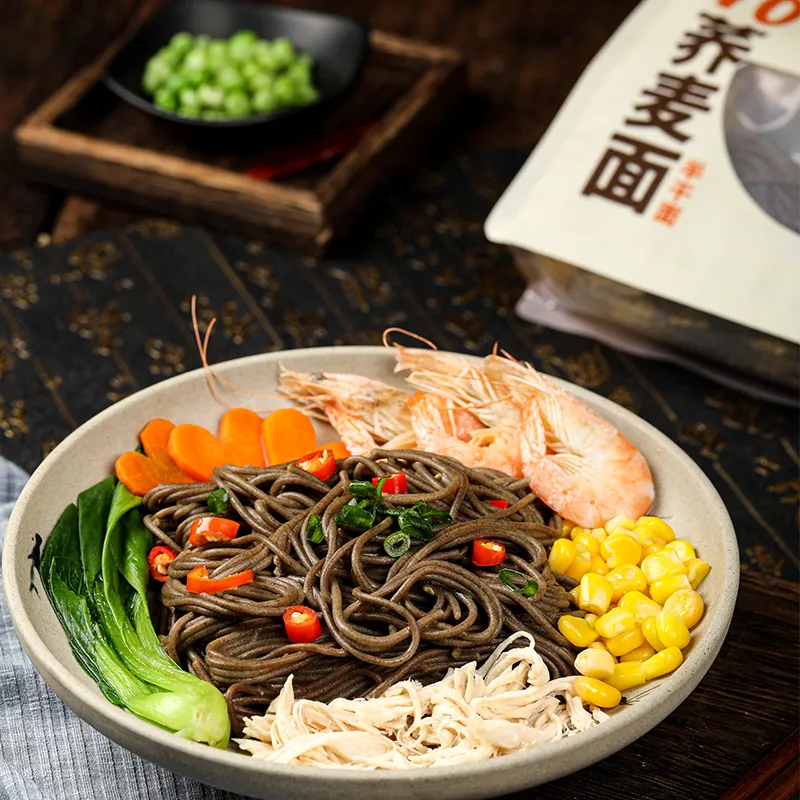Chilled Soba Noodles with Fresh Toppings for a Refreshing Meal
Discovering the Delicacy of Cold Soba Noodles
Soba noodles, a timeless staple of Japanese cuisine, have been captivating palates for centuries. Traditionally made from buckwheat flour, these long, thin noodles are celebrated not only for their distinct nutty flavor but also for their health benefits. In the hot summer months, when the temperature soars, one delightful way to enjoy soba is by serving them cold, accompanied by fresh dipping sauces and an array of vibrant toppings.
The origins of soba noodles can be traced back to the Edo period in Japan, a time when buckwheat was cultivated extensively. Unlike wheat flour noodles, which can be heavy and overly filling, soba noodles are light and nutritious, making them a perfect choice for a refreshing meal. They are rich in protein, fiber, and essential minerals, providing a wholesome and satisfying dish without the added heaviness.
Discovering the Delicacy of Cold Soba Noodles
To prepare cold soba, the process is straightforward. Soba noodles are boiled in water until they reach the desired tenderness, often just a few minutes. After cooking, they are quickly rinsed under cold water to halt the cooking process, a technique known as shocking. This not only stops the cooking but also removes excess starch, preventing the noodles from becoming sticky. Once cooled, the noodles are drained and artfully arranged on a zaru (a bamboo mat), ready to be served.
cold noodle soba

The dip, tsuyu, is typically made from a blend of soy sauce, mirin (a sweet rice wine), and dashi (a Japanese stock made from kelp and bonito flakes). This umami-rich sauce perfectly complements the earthy flavor of the soba noodles, creating a harmonious balance on the palate. Variations of tsuyu can include additional ingredients such as grated ginger, wasabi, or sesame, adding depth and complexity to the dish.
What makes cold soba truly delightful is the variety of toppings that can be served alongside it. Chopped green onions, grated daikon radish, and nori strips (dried seaweed) are popular choices that enhance both flavor and presentation. For those looking to add protein to their meal, toppings such as tempura shrimp, sliced cucumbers, or even marinated tofu can transform a simple dish into a complete feast. The visual appeal of the colorful toppings against the dark noodles creates an inviting presentation that whets the appetite.
Cold soba noodles are not only delicious but also come with a host of health benefits. Being a whole grain, buckwheat is gluten-free, making it suitable for those with gluten sensitivities or celiac disease. Buckwheat is high in antioxidants, which help combat oxidative stress in the body, and its high fiber content promotes digestive health. Additionally, soba noodles have a lower glycemic index compared to traditional wheat noodles, making them a good choice for those managing blood sugar levels.
In a world where convenience dominates, cold soba noodles offer a quick and nutritious meal option. They are easy to prepare in advance and can be stored in the refrigerator for a few days, making them an ideal choice for meal prep. A bowl of cold soba can be enjoyed on its own or incorporated into vibrant salads with fresh vegetables, proteins, and a drizzle of vinaigrette for a nutritious and satisfying dish.
As summers heat up and the search for lighter meals begins, cold soba noodles rise to the occasion as a versatile and nutritious option. Whether enjoyed in a traditional setting or with contemporary twists, cold soba noodles bring together taste, health, and culture, making them a cherished meal in Japan and beyond. So why not embark on a culinary journey and make a bowl of cold soba for yourself? With every bite, you’ll not only indulge in a delicious dish but also experience the rich tradition that surrounds this beloved noodle.
-
Unleash Your Inner Chef with Delectable Italian Pasta CreationsNewsAug.01,2025
-
Savor Health and Flavor: Irresistible Soba Noodles for Sale Await!NewsAug.01,2025
-
Nourish Your Body with Premium Organic Ramen - A Culinary Delight AwaitsNewsAug.01,2025
-
Elevate Your Dishes with Our Exquisite Kinds of Egg NoodlesNewsAug.01,2025
-
Dive into Flavorful Convenience with Our Ramen OfferingsNewsAug.01,2025
-
Discover Exquisite Types of Naengmyeon and Chilled Soba NoodlesNewsAug.01,2025
-
Is Whole Wheat Pasta Healthy?NewsMay.30,2025
Browse qua the following product new the we

















































































































